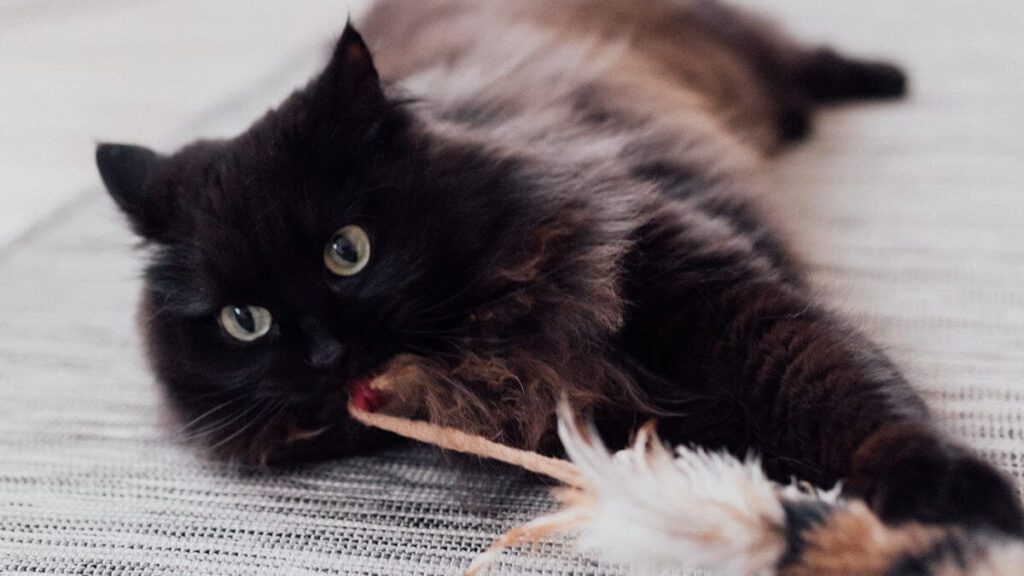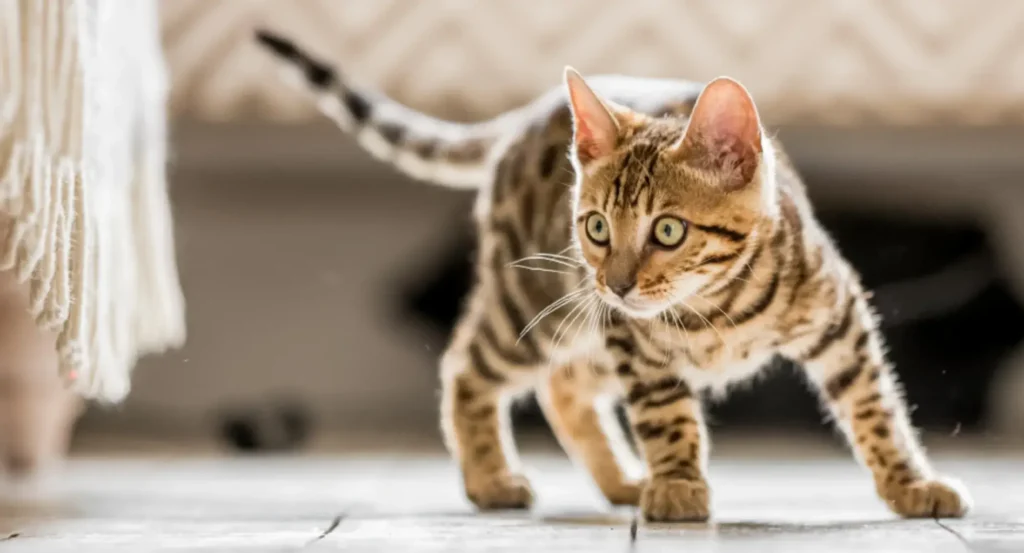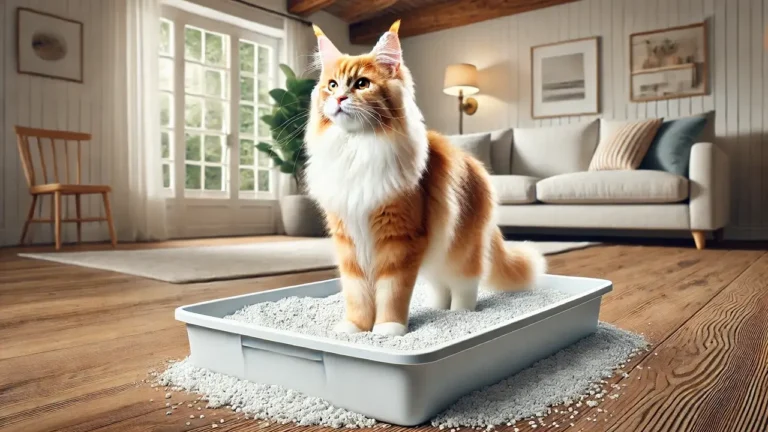Cats are fascinating creatures known for their independence, agility, and mysterious nature. However, despite their aloof reputation, cats crave interaction and mental stimulation, much like their canine counterparts. Playtime is an essential aspect of a cat’s life, contributing to their physical health, mental well-being, and overall happiness. But how long should you play with your cat each day? This question doesn’t have a one-size-fits-all answer, as it depends on various factors such as your cat’s age, health, and personality. In this article, we’ll explore the importance of playtime for cats, how to determine the right amount of play, and tips for ensuring your feline friend gets the most out of their play sessions.
Playtime is a vital part of your cat’s daily routine, contributing to their physical health, mental well-being, and overall happiness. While the exact amount of time you should spend playing with your cat can vary based on their age, health, and personality, a general guideline of 30 minutes a day is a good starting point. Remember to tailor playtime to your cat’s preferences, use a variety of toys, and be consistent with your play sessions. By making playtime a regular part of your cat’s day, you’ll help ensure they lead a happy, healthy, and fulfilled life.
Engaging with your cat in daily play not only enriches their life but also strengthens the bond you share. Whether you have a playful kitten, an energetic adult, or a laid-back senior, understanding their needs and preferences will help you provide the best possible care. So grab a toy, set aside some time, and enjoy the many benefits that come from playing with your feline friend.
The Importance of Playtime for Cats
Playtime isn’t just about fun and games; it serves as a crucial part of a cat’s daily routine. Here’s why:
- Physical Exercise: Cats are natural hunters, and in the wild, they would spend a significant portion of their day stalking and capturing prey. Domestic cats still have these instincts, and play is a safe and effective way to satisfy them. Regular play helps maintain a healthy weight, improve coordination, and build strong muscles. Without sufficient physical activity, cats can become obese, which may lead to a variety of health problems, including diabetes, heart disease, and joint issues.
- Mental Stimulation: Cats are intelligent animals that need mental stimulation to stay happy and healthy. Playtime allows them to engage their brains, solving problems, and satisfying their natural curiosity. Interactive toys, puzzles, and even simple games like chasing a laser pointer can keep your cat mentally sharp and reduce the likelihood of behavioral issues such as anxiety or aggression.
- Bonding with You: Playtime is an excellent opportunity to bond with your cat. Regular interaction strengthens the relationship between you and your feline companion, making them feel secure and loved. This can be particularly important for cats that are shy or have trust issues, as play can help them come out of their shell and develop confidence.
- Preventing Boredom: Cats that don’t get enough playtime can become bored, leading to destructive behaviors like scratching furniture, chewing on cords, or excessive meowing. By providing adequate playtime, you can keep your cat entertained and prevent these unwanted behaviors.

How Long Should You Play with Your Cat?
The amount of playtime your cat needs can vary based on their age, energy level, and health. However, a general guideline is to aim for about 30 minutes of active play each day. This can be broken up into multiple sessions, especially if your cat is easily tired or if you have a busy schedule.
1. Kittens (Up to 1 Year Old):
Kittens are full of energy and curiosity, requiring frequent play sessions throughout the day. Aim for at least three to four play sessions, each lasting about 10-15 minutes. These short bursts of activity help kittens develop their coordination, learn important social skills, and burn off their boundless energy.
2. Adult Cats (1-7 Years Old):
Adult cats are usually more settled than kittens, but they still need regular playtime to stay fit and mentally stimulated. Two play sessions of 15 minutes each, or three sessions of 10 minutes, should suffice for most adult cats. However, some high-energy breeds, like Bengals or Abyssinians, may require more playtime to keep them satisfied.
3. Senior Cats (7+ Years Old):
Senior cats may not be as spry as they once were, but that doesn’t mean they don’t need playtime. Gentle play sessions of 5-10 minutes a few times a day can help keep their joints flexible, provide mental stimulation, and prevent boredom. It’s important to tailor play to their abilities, using slower-moving toys or those that require less physical exertion.
Understanding Your Cat’s Play Style
Every cat is unique, and understanding your cat’s play style can help you tailor playtime to their preferences, ensuring they get the most enjoyment and benefit from it.
1. The Hunter:
Some cats love to stalk, pounce, and capture their “prey,” which might be a feather toy, a moving string, or a laser pointer. These cats benefit from interactive toys that mimic the movements of small animals. Engaging them in games that involve chasing and capturing can satisfy their hunting instincts.
2. The Athlete:
Highly energetic cats may enjoy more physically demanding games, such as fetching small toys, jumping for dangling objects, or racing around the house. These cats may need longer or more intense play sessions to tire them out and keep them happy.
3. The Puzzle Solver:
Some cats are more mentally driven and enjoy challenges that make them think. Puzzle toys that dispense treats or interactive games that require problem-solving can be particularly satisfying for these cats. Incorporating mental stimulation into their playtime can prevent boredom and keep their minds sharp.
4. The Snuggler:
Some cats prefer a quieter form of play, enjoying activities that involve closeness and gentle interaction. For these cats, you might focus on activities that allow them to be near you, such as gentle petting while they chase a toy or playing with a toy on a string while they sit in your lap.

Tips for Effective Playtime
To make the most out of playtime with your cat, keep these tips in mind:
- Be Consistent: Regular play sessions are more beneficial than sporadic bursts of activity. Try to incorporate playtime into your daily routine at times when your cat is most active, such as early morning or late evening.
- Use a Variety of Toys: Cats can get bored with the same toys, so it’s a good idea to have a variety of options available. Rotate toys regularly to keep things fresh and exciting for your cat.
- Encourage Natural Behaviors: Play that mimics natural behaviors like hunting, stalking, and pouncing will be more engaging for your cat. Toys that move unpredictably, or ones you can control to mimic the movements of prey, are often the most enticing.
- Let Your Cat Win: While it’s fun to keep your cat engaged, it’s also important to let them “win” sometimes by catching the toy. This provides a sense of accomplishment and keeps them motivated to play.
- Watch for Overstimulation: Some cats can become overstimulated during play, leading to aggressive behaviors like biting or scratching. If your cat shows signs of overstimulation, such as dilated pupils, twitching tail, or sudden swiping, it’s best to take a break and allow them to calm down.
- Interactive Play vs. Independent Play: While interactive play with you is essential, it’s also a good idea to provide toys that your cat can play with on their own, especially when you’re not around. Puzzle feeders, balls, or even cardboard boxes can keep your cat entertained when you’re busy.





